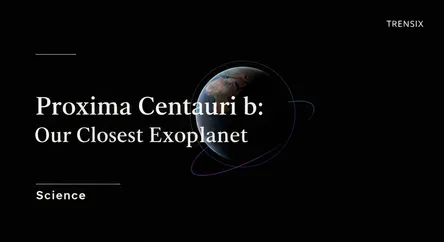Science
Proxima Centauri b: Our Closest Exoplanet

Discover Proxima Centauri b, the closest exoplanet to our solar system. Learn why this rocky world, orbiting in its star's habitable zone, excites scientists.
What is it?
Proxima Centauri b is an exoplanet orbiting Proxima Centauri, the closest star to our Sun, just over four light-years away. Discovered in 2016, this planet is slightly more massive than Earth and is considered a terrestrial, or rocky, world. It orbits its star at a very close distance, completing a full revolution in just 11.2 Earth days. Crucially, it resides within its star's 'habitable zone'—the region where conditions might be right for liquid water to exist on its surface, a key ingredient for life as we know it.
Why is it trending?
Proxima Centauri b consistently captures attention due to its status as our nearest potentially habitable exoplanet. The possibility of an Earth-like world being our cosmic neighbor is a powerful driver of research and public fascination. Ongoing studies, including observations by the James Webb Space Telescope, aim to determine if it has an atmosphere and, if so, what its composition is. Any detection of biosignatures, like oxygen or methane, would be a monumental discovery in the search for extraterrestrial life, keeping this exoplanet in the scientific spotlight.
How does it affect people?
This nearby world profoundly impacts our perspective on the universe and our place in it. For humanity, Proxima Centauri b represents a tangible target for future interstellar exploration, inspiring new technologies and science fiction. It fuels the fundamental human question, "Are we alone?" by providing a specific, tantalizing target for the search for life. It makes the abstract concept of exoplanets feel immediate and real, encouraging public engagement with astronomy and pushing scientists to develop ever-more powerful tools to explore distant worlds.